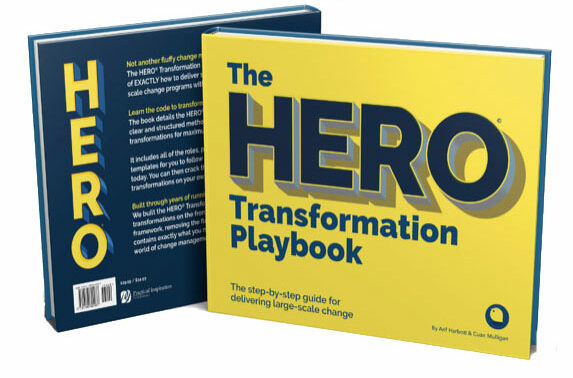This is the 3rd blogpost on the book the HERO Transformation Playbook. Section 3 is devoted to the second part of the transformation process: the delivery. Attention is given to blockers backlogs, reporting types and follow-up meetings, Kanban (the overall “to do-list), initiatives and communication structure.
“Delivery is where the value is created”
“Delivery is where the value is actually created,” the authors say. And in this phase there are of course resistances; Sooner or later they had to show up, as you may remember. Resistance is treated In a logical way and is associated with organizational maturity. I wish it were as simple as suggested. The same goes for the proposed remedy. It shows again the merits and the weak points at the same time of this book: the rational process steams like a roller coaster through the transformation. The incidents, emotions and mental blockers are registered and treated on a to do basis; above all they seem to be delegated in the lower levels of the organisation. A study on corporate acceptance of formerly delivered projects would be a great idea to prove the HERO method is really a better alternative than others for transformation. That at least would convince me and probably also some other readers.
Tools – techniques – recipes…
This 3rd section contains a mass of very valuable technical stuff, from templates to meeting recipes. Transformation leaders will find numerous tools to support their teams and projects. Using these materials wisely will make the book valuable as a real “playbook”. With some sceptic common sense one could combine these insights with others to build an in-house toolbox for transformation. Those who will follow the steps without proper reflection may have some difficulties though in search of “enterprise value”.
The end reminds me of the beginning…
The 4th section is very short, and in a way a bit too short. So many ideas were covered in the book that such a short section could give the wrong idea about the “lessons learned”. There may more than the ones that are listed. Despite my sometimes sceptical impressions of the book, I am convinced it will pay off as a resource for transformation leaders for mainly large-scale projects. Too pity the book is not fully in balance with the end and the beginning giving me some mixed feelings. But overall a valuable resource for every change management professional.

